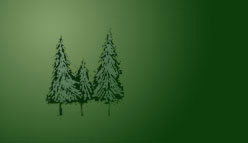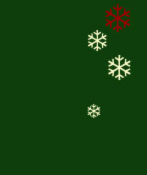- Instinctive shooting
- Tuning the longbow
- Let down
- Cast
Instinctive shooting
When an archer is shooting instinctively, we mean that they are not consciously
aiming but shooting an arrow where they are looking in much the say way as one would throw a small ball.
It is possible to learn to shoot
instinctively by practising until the technique becomes instinctive. I use the word instinctive because the technique is using
the innate ability of hand to eye co-ordination something which we are not all blessed with and so must nurture this innate
skill. We have not perfected hand to eye co-ordination through childhood we must
learn this skill.
The only way to learn instinctive
archery is to cast aside any doubts and do it. Dont expect to hit the centre of the target but you will hit the target! You
must put aside any notions of point of aim, gap shooting, site marks and keep both eyes open after all your brain has mastered
binocular vision exactly for the purpose to be able to see three dimensions, the third being distance. From now on, squinting
with one eye is for pirate impersonations.
Start with a target 15-20 yards
away and attach a small piece of white paper on the target. Get ready to shoot in you normal way positioning yourself inline
with the target. Nock the arrow to the bow and take up a wee bit of tension onto your fingers. Fix your eyes on the target
and keep in your mind that that white spot is where the arrow is going to go- not just anywhere on the spot but in the centre
of the spot. Draw back the arrow so that the string is touching your face as close to below your eye as you can achieve (forget
you platform tab, a glove is best for this technique or use a simple tab). With a Mediterranean loose (one finger above the
arrow, two below) I hook the bottom finger onto my eye tooth. You can see that the arrow is pointing towards the centre of
the target but dont take your eye of the point you want the arrow to go to- and let loose.
Shooting
in this way with a reference point to the side of your face will mean that the arrow will shoot to the left. This is best rectified when shooting instinctively by canting the bow- leaning in top of the bow to the
right and perhaps leaning the head slightly to the right as well. See what works best for you.
Tuning the longbow
It is possible to tune a longbow, even though there are no screws to turn.
There are several things to do at home to make sure that the bow performs at its best.
You could just stick with the string that came with the bow or you may find that a fastflight string is better, with
more cast and less stretch. Always consult the bowyer about whether he made the
bow to take a fastflight string as it is tougher on the bow. Check that the string
is not wearing- the last this you want is a string failure as this can be fatal to the bow. And you will be left with firewood.
The string need s some attention. Longbowmen of old would keep their strings in their pockets where they were clean and dry,
stringing up their bows at the last minute when it was raining. Crossbow archers could not do this and suffered more failures.
So keep your string well-waxed but not overly so. If the serving is frayed then replace it. The serving should be no longer
than the span of your hand (say 6 inches).
If you have a double loop string you will have no worries about a slipping knot. On the other hand,
the only way to adjust the bracing height of the bow is to add or remove twists in the string. Pay attention to the bracing
height your bowyer has tillered the bow to. Bracing height is the distance between the belly of the bow (the side facing you
as you shoot) and the string at rest. If you don't know the correct bracing height for your bow, the traditional formula is
1/12th of the length of the bow (measured from string nock to string nock). So a 75 inch bow requires a bracing
height of 6¼inches.
Let down
The performance of you bow will alter during the shoot. You
need to be aware of this or desparation will be your fate.
During the shooting of a round
it may be noticed that the arrows are falling lower. This may be due to the archer becoming tired and not pulling back so
far each time an arrow is shot or because the bow is losing some of its performance.
This may be because the string is becoming stretched or because the bow is losing some of its resilience.
If the string becomes stretched
or the knot becomes loosened the bracing height of the bow will be reduced and affect the bows performance. Not only does
the bow become less effective but the chances of the archers arm being struck by the string on the loose is increased.
During a round you can give the
bow and string a rest by un-nocking the bow if there is a break in shooting between distances. You can also adjust the bracing
height by putting a few extra twists into the string or adjusting the knot.
The bow will also lose cast in very hot weather- yet another effect of global warming! The effect of laying the bow
on the damp ground and the heat of the sun on a hot day will lead to the temporary softening of the wood and loss of cast.
Bert Smith
in his Shooting in the longbow gives a good account of let-down over two extremely hot days (27degrees C)on
which he conducted an experiment. Over a round of six dozen arrows he measured the bow weight of several bows and
found that they dropped between 3-6lbs. He then laid the bows on the ground for minutes and found that they had lost
a further 2-3lbs.
Cast
When a bow is drawn it quickly loses its power. Also, over time you bow will not
fling the arrows down to the target like it used to when new. This is loss of cast.
A further consideration (also mentioned by Bert) is the loss of cast whilst
the bow is held a full draw. He says that the poundage drops considerably during the first second or so. This is why many longbow archers will let loose as soon as the string is pulled fully back. Paradoxically,
it is also why some longbow archers hold there draw for a breath taking time.
Over the years, each time the bow is drawn, the wood fibres are stretched
and the bow does not spring back into shape. It is said to have followed the string. The bow becomes less effective and will
lose its poundage and cast.




